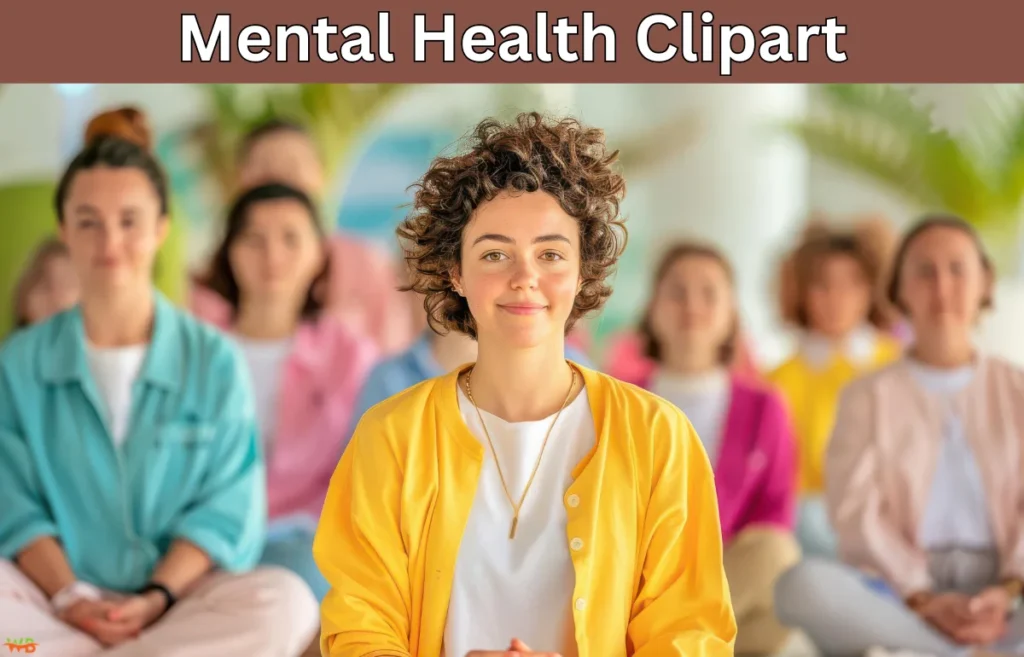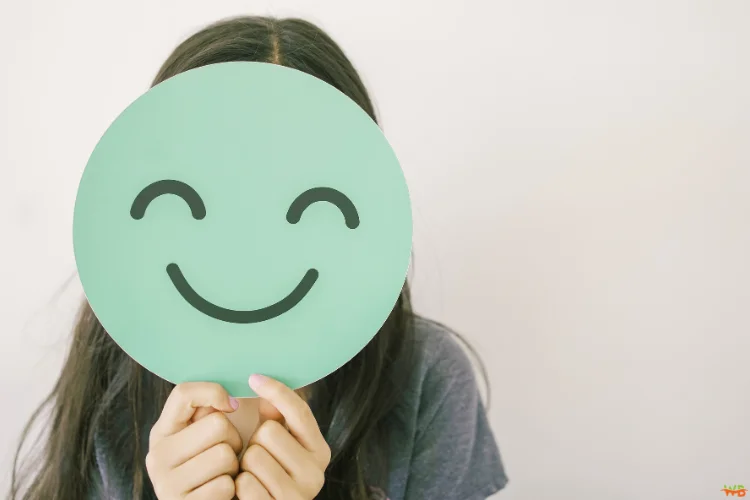When it comes to promoting mental health awareness, visuals play an essential role. Whether for blogs, social media, presentations, or websites, using mental health clipart can help convey important messages and create engaging, supportive environments. But what exactly is mental health clipart, and how can it help you in your mental health-related projects? This guide will provide you with a comprehensive overview of this valuable asset.
What is Mental Health Clipart?
Mental health clipart consists of various illustrations and digital images that represent mental health concepts and issues. These designs typically feature calming visuals, symbols of support, and representations of mental well-being, such as stress relief, therapy, mindfulness, and emotional balance. From simple illustrations of happy people to more complex diagrams of emotional health, clipart serves as a versatile tool in raising awareness and sharing important information.
These images can range from friendly, approachable visuals for general audiences to more technical representations for professionals in the field. Whether you’re an educator, a counselor, or a business owner, mental health clipart can help you communicate vital messages effectively.
Why You Should Use Mental Health Clipart
1. Enhance Engagement and Accessibility
One of the primary reasons to incorporate mental health clipart in your content is its ability to boost engagement. Visual elements naturally draw attention and make information more accessible. When talking about mental health—an often sensitive and complex topic—images can break down barriers, making it easier for people to understand and empathize with various conditions and strategies.
2. Support Mental Health Awareness
Mental health is often overlooked or stigmatized, but using appropriate visuals can reduce this stigma. Clipart that portrays mental health in a positive, open light helps normalize conversations about topics such as anxiety, depression, and self-care. This encourages others to seek help and fosters a supportive community.
3. Create Professional and Calming Designs
Whether you’re creating flyers for a mental health awareness event, designing a website for a counseling service, or sharing tips on social media, mental health clipart offers an opportunity to add professionalism and warmth to your visuals. By choosing appropriate clipart, you can convey compassion, empathy, and professionalism, all of which are crucial when discussing sensitive topics like mental health.
How to Choose the Right Mental Health Clipart
1. Identify the Message You Want to Convey
Before you choose your mental health clipart, consider what message you’re aiming to share. Are you addressing mental health challenges, promoting self-care, or encouraging therapy? You may opt for images that captivate and appeal to your audience by explicitly stating your goal.
For instance, if your goal is to raise awareness about stress, you might want to select images depicting relaxation, deep breathing, or meditative practices. Conversely, if you’re promoting therapy or mental health services, clipart featuring conversations, support networks, or professional settings might be more suitable.
2. Opt for Inclusive and Diverse Imagery
Mental health affects everyone, so it’s crucial to choose mental health clipart that represents people from all walks of life. Look for designs that showcase diversity in terms of gender, ethnicity, age, and background. This helps create a more inclusive message, ensuring that everyone feels represented and supported.
3. Choose the Right Style
The design style of your clipart can have a direct impact on how your message resonates. Some mental health-related topics may benefit from soft, calming illustrations with pastel colors, while others may require more bold, dynamic visuals to emphasize urgency or empowerment.
Consider the emotional tone you want to evoke in your content. For example, simple line art might be suitable for educational purposes, while colorful, lively clipart could be more appropriate for social media posts encouraging self-care.
Where to Find High-Quality Mental Health Clipart
Now that you know what to look for, you might be wondering where to find high-quality mental health clipart. Many platforms on the internet offer images that you can either buy or download without cost.
1. Stock Image Websites
Websites like Shutterstock, iStock, and Adobe Stock offer a vast range of clipart options related to mental health. These platforms typically provide high-quality, professional designs that are easy to search and filter by theme, style, or type.
2. Free Resources
For those on a budget, free clipart resources like Pixabay and Unsplash are great options. These platforms offer free downloads of high-resolution images, though the selection may be more limited compared to paid sites.
3. Specialized Mental Health Sites
Some websites specialize in mental health content and may offer tailored clipart packs. These sites often focus on providing images that are specifically designed for mental health professionals, educators, and organizations.
How to Use Mental Health Clipart Effectively
1. Create Educational Materials
Mental health clipart can play a key role in making your educational materials more engaging. Whether you’re creating handouts, brochures, or presentations, using clipart to illustrate key points will capture attention and make complex topics easier to understand.
For example, when explaining techniques for managing anxiety, a visual of deep breathing exercises, calming nature scenes, or a person meditating can help reinforce the message.
2. Enhance Social Media Content
Social media is a powerful tool for spreading mental health awareness, and using mental health clipart is a great way to make your posts more eye-catching. Share infographics, inspirational quotes, or mental health tips with relevant illustrations. Engaging visuals increase the likelihood of sharing, which can help spread important messages to a wider audience.
3. Design Supportive Websites or Blogs
If you’re building a website or blog dedicated to mental health, clipart can be used to break up text and make the content more inviting. Whether you’re providing resources, offering online therapy, or writing about mental health issues, the right clipart can help make your site more approachable and less intimidating.
Step-by-Step Guide: How to Integrate Mental Health Clipart into Your Projects
Use this quick guide to discover how to implement mental health clipart in your upcoming work.
Step 1: Define Your Goal
Before you begin, clarify what you want to achieve with your project. Do you want to educate, spark interest, or encourage involvement? Your project’s goal will influence the type of clipart you choose.
Step 2: Select Your Clipart
Browse through various platforms to find images that align with your goal. Consider style, color palette, and the emotions you want to evoke. Ensure the images you choose reflect the diversity of mental health experiences across different communities.
Step 3: Integrate Clipart Into Your Content
Once you’ve chosen the appropriate clipart, start integrating it into your content. Place images strategically alongside text, or use them as the focal point in posters, social media posts, or blog posts. Ensure that your clipart enhances the message rather than overwhelms it.
Step 4: Review and Adjust
Finally, review your project as a whole. Is your message clear and engaging? If needed, tweak the positioning and dimensions of the images to maintain a harmonious layout.
Conclusion
Using mental health clipart is a powerful way to communicate important messages, reduce stigma, and engage audiences in meaningful ways. Whether you’re creating educational materials, designing websites, or promoting awareness through social media, the right images can significantly enhance your content.
Thoughtfully chosen, inclusive, and visually attractive clipart can play a role in making mental health discussions more supportive and understanding. So why wait? Invest in high-quality visuals today, and start transforming your mental health-related content into something impactful and engaging.
FAQs
1. How can visuals help in mental health education?
- Visuals can play a critical role in mental health education by simplifying complex topics, making information more accessible, and helping to engage audiences. They can enhance understanding by illustrating concepts like stress management, coping strategies, and therapy techniques in a way that is easy to digest. Moreover, imagery can evoke empathy and encourage open discussions about mental well-being.
2. Are there any copyright concerns when using free visuals?
- Yes, it’s important to verify the usage rights when downloading free visuals. Not all free resources are completely free for commercial use, so it’s crucial to check the license and attribution requirements. Some platforms provide visuals under Creative Commons licenses, which might have specific terms for use, including crediting the creator.
3. In what ways can illustrations contribute to changing perceptions of mental health?
- Absolutely! Illustrations that portray mental health in a positive light can help shift the narrative and reduce the stigma surrounding it. By depicting individuals in various mental health situations with empathy and respect, visuals can humanize the conversation, making it more approachable for people to seek help or talk about their experiences.
4. What types of projects can benefit from using supportive visuals?
- Supportive visuals can be incredibly useful in a variety of projects, including educational workshops, blogs, social media campaigns, websites for therapists, and even mental health awareness events. Any project aiming to raise awareness, provide resources, or offer encouragement can benefit from thoughtful imagery that complements the content.
5. How can carefully chosen visuals enhance a calming experience in digital settings?
- Using calming visuals in digital spaces, like websites or apps, can help foster a sense of peace and reduce anxiety. Soft colors, natural themes, and images that evoke serenity can create a soothing atmosphere, making people feel more comfortable and supported when navigating mental health resources or engaging with self-care content.

I’m Salman Khayam, founder of Wellbeing Junction. I synthesize trusted information from research and expert guidance to create clear articles across health, wellness, and lifestyle topics.
Disclaimer: Content is for informational purposes only and is not medical advice. Consult a qualified expert regarding personal health or specialized questions.
Discover more from Wellbeing Junction
Subscribe to get the latest posts sent to your email.




